You may have noticed that we love a little thing called color and we can’t help but love anything that incorporates it. It’s for this reason that we were beyond thrilled when the opportunity rolled around to help Le Creuset present their 2020 colors! Now, I know what you are thinking, “you don’t even like to cook,” but here’s the thing… these colors are so beyond beautiful that I am on the verge of potentially writing a new chapter of my life called “I want to cook in colorful cookware” and Le Creuset may be the sole reason that I am capable of writing this new chapter. If you haven’t seen the new colors yet, be prepared for what one can only call perfection.
Let me present you with their newest colors. Drum roll please….
Materials:
Nectar, which one might describe as being the Yellow of the Gods. Yellow, as defined by the dictionary, “is the color between green and orange in the spectrum, a primary subtractive color complementary to blue; colored like ripe lemons or egg yolks.” In the dictionary of Brittany Jepsen, I like to define it as “the happiest color.” Nectar is the most vibrant perfect yellow you have ever laid your eyes upon.
The second color of the year is…Artichaut! It’s a deep, rich green (think artichoke!). Some shades of green can be hard to use and fully appreciate at times when it’s not quite the right shade or hue, but it is impossible NOT to appreciate Artichaut.
Green is essentially the color of life. It is associated with nature, growth, harmony, and also envy but trust me, you aren’t going to be feeling any of that with this green in your kitchen! It is the perfect green to go in any home and it’s definitely the green that is going to get me a-cookin’!
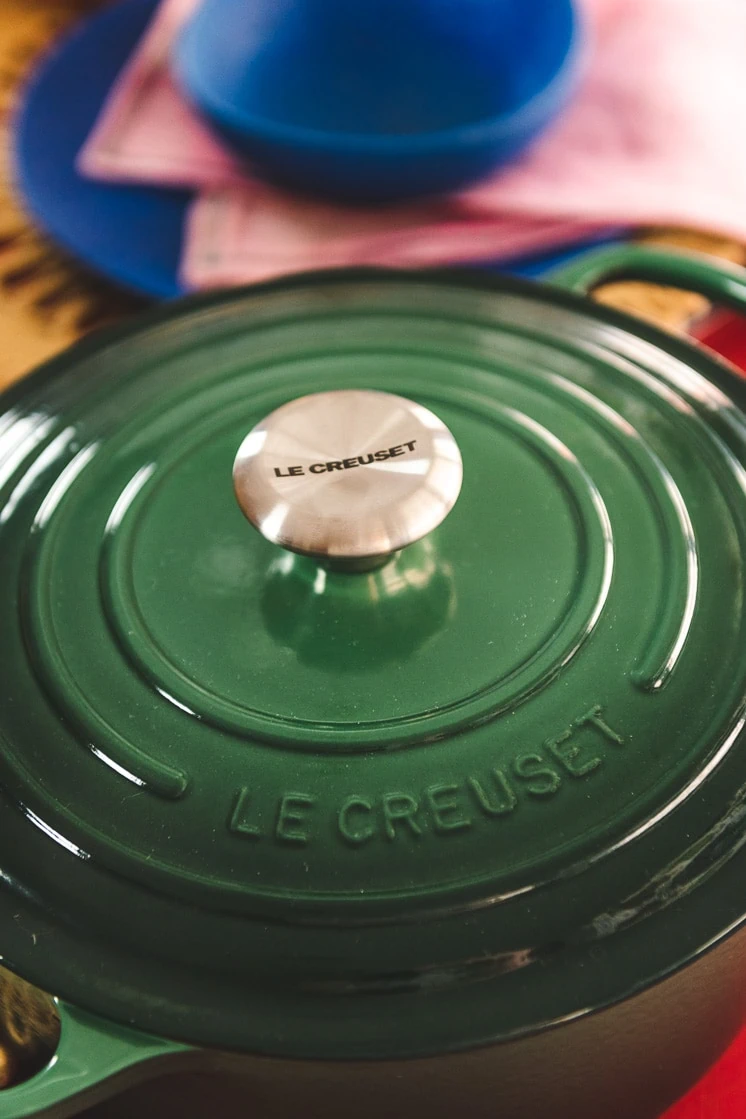
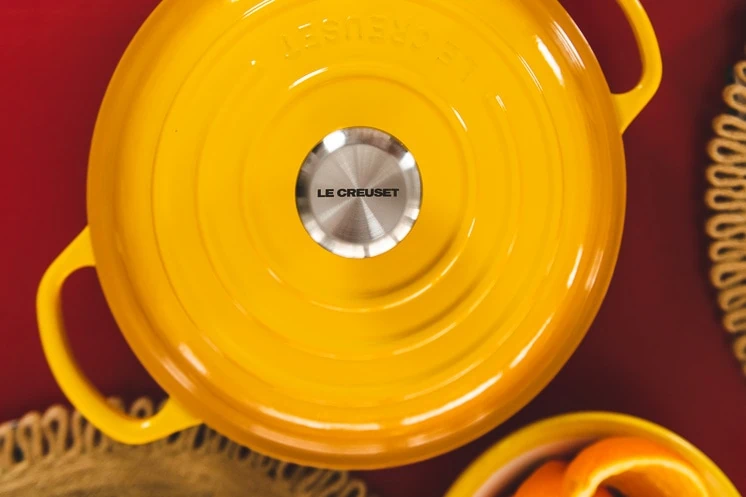
Materials to dye with natural ingredients:
- Linen
- Rotary Cutter
- Cutting Mat
- Sewing Machine
- Thread
- Pots
- Knive
- Water
- Stove
- Slotted spoon
- Sieve
- Oven
- Raspberries
- Strawberries
- Lemons
- Oranges
- Spinach
- Yellow onions
- Red cabbage
- Blueberries
- Blackberries
- Salt
- Vinegar
Directions:
Fabric Preparation:
- Cut fabric to 17” x 17” squares using a rotary cutter.
- Prep fabric for dyeing with vinegar and salt. For all of your vegetable based dyes, use vinegar to set them and for fruit based dyes you will use salt.
- For the vinegar, pour 1 cup vinegar and 3 cups water into a pot and bring it to a boil. If you have a larger dye batch, be sure to adjust liquid measurements accordingly.
- Place your fabric into the vinegar water solution and let the fabric boil for one hour.
- For the salt, pour 1/2 cup salt and 3 cups of water into a pot and bring it to a boil. If you have a larger dye batch be sure to adjust salt and liquid measurements accordingly.
- Place your fabric into the salt water solution and let the fabric boil for one hour.
- Rinse and it’s now ready to use!
While these are boiling you can get going on dyes!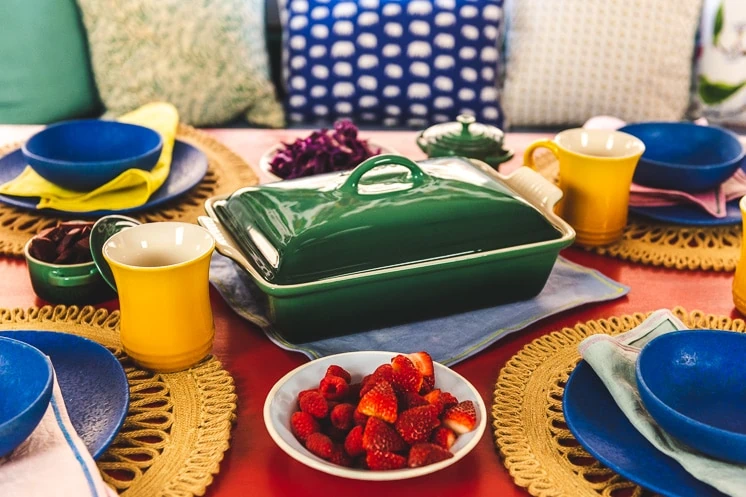
How to dye red using natural ingredients:
- Skin and cube the beets.
- Pour water into the pot you are using for dyeing. For every 1 cup of beets you pour in you will want to add 2 cups of water. Be sure to adjust the measurements depending on how much dye you would like to make. You will want to make enough to fully submerge your fabric into the dye.
- Pour the beets into the water.
- Bring the water with beets to a boil.
- Turn down the heat to a low.
- Let simmer for an hour.
- Bring the beets and water to room temperature.
- Remove beets with sieve.
- Wet fabric with cold water.
- Place wet fabric in the dye.
- Let sit for a minimum of one hour. The longer you leave it in the dye the more vibrant the color will be.
- Remove the fabric from the dye and rinse with cold water.
- Set out to dry!
How to dye pink using natural ingredients:
- Remove the stems from strawberries and any leaves from raspberries.
- Pour water into the pot you are using for dying. For every 1 cup of fruit you pour in you will want to add 2 cups of water. Be sure to adjust the measurements depending on how much dye you would like to make. You will want to make enough to fully submerge your fabric into the dye.
- Pour the strawberries and raspberries into the water.
- Bring the water with fruit to a boil.
- Turn down the heat to a low.
- Let simmer for an hour.
- Bring the beets and water to room temperature.
- Remove beets with sieve.
- Wet fabric with cold water.
- Place wet fabric in the dye.
- Let sit for a minimum of one hour. The longer you leave it in the dye the more vibrant the color will be.
- Remove the fabric from the dye and rinse with cold water.
- Set out to dry!
How to dye orange using natural ingredients:
- Peel the dry skin off of the onion.
- Pour water into the pot you are using for dying. For every 1 cup of peels you pour in you will want to add 2 cups of water. Be sure to adjust the measurements depending on how much dye you would like to make. You will want to make enough to fully submerge your fabric into the dye.
- Pour the peels into the water.
- Bring the water with peels in it to a boil.
- Turn down the heat to a low.
- Let simmer for an hour.
- Bring the peels and water to room temperature.
- Remove peels with sieve.
- Wet fabric with cold water.
- Place wet fabric in the dye.
- Let sit for a minimum of one hour. The longer you leave it in the dye the more vibrant the color will be.
- Remove the fabric from the dye and rinse with cold water.
- Set out to dry!
How to dye yellow using natural ingredients:
- Peel your oranges and lemons.
- Pour water into the pot you are using for dying. For every 1 cup of peels you pour in you will want to add 2 cups of water. Be sure to adjust the measurements depending on how much dye you would like to make. You will want to make enough to fully submerge your fabric into the dye.
- Pour the peels into the water.
- Bring the water with peels in it to a boil.
- Turn down the heat to a low.
- Let simmer for an hour.
- Bring the peels and water to room temperature.
- Remove peels with sieve.
- Wet fabric with cold water.
- Place wet fabric in the dye.
- Let sit for a minimum of one hour. The longer you leave it in the dye the more vibrant the color will be.
- Remove the fabric from the dye and rinse with cold water.
- Set out to dry!
How to dye green using natural ingredients:
- Measure out 1 cup of spinach.
- Pour water into the pot you are using for dying. For every 1 cup of spinach you pour in you will want to add 2 cups of water. Be sure to adjust the measurements depending on how much dye you would like to make. You will want to make enough to fully submerge your fabric into the dye.
- Pour the spinach into the water.
- Bring the water with spinach in it to a boil.
- Turn down the heat to a low.
- Let simmer for an hour.
- Bring the spinach and water to room temperature.
- Remove spinach with sieve.
- Wet fabric with cold water.
- Place wet fabric in the dye.
- Let sit for a minimum of one hour. The longer you leave it in the dye the more vibrant the color will be.
- Remove the fabric from the dye and rinse with cold water.
- Set out to dry!
How to dye purple using natural ingredients:
- Measure out 1 cup of blueberries and blackberries.
- Pour water into the pot you are using for dying. For every 1 cup of fruit you pour in you will want to add 2 cups of water. Be sure to adjust the measurements depending on how much dye you would like to make. You will want to make enough to fully submerge your fabric into the dye.
- Pour the spinach into the water.
- Bring the water with spinach in it to a boil.
- Turn down the heat to a low.
- Let simmer for an hour.
- Bring the fruit and water to room temperature.
- Remove fruit with sieve.
- Wet fabric with cold water.
- Place wet fabric in the dye.
- Let sit for a minimum of one hour. The longer you leave it in the dye the more vibrant the color will be.
- Remove the fabric from the dye and rinse with cold water.
- Set out to dry!
How to dye blue using natural ingredients:
- Slice the cabbage.
- Pour water into the pot you are using for dying. For every 1 cup of cabbage you pour in you will want to add 2 cups of water. Be sure to adjust the measurements depending on how much dye you would like to make. You will want to make enough to fully submerge your fabric into the dye.
- Pour the beets into the water.
- Bring the water with beets to a boil.
- Turn down the heat to a low.
- Let simmer for an hour.
- Bring the cabbage and water to room temperature.
- Remove cabbage with sieve.
- Wet fabric with cold water.
- Place wet fabric in the dye.
- Let sit for a minimum of one hour. The longer you leave it in the dye the more vibrant the color will be.
- Remove the fabric from the dye and rinse with cold water.
- Set out to dry!
Sewing a napkin:
We decided to complete our table with a homemade napkin using our dyes. Here’s how to get the look.
- Cut the fabric edges straight and trim away any strings that have frayed.
- Press the edges ½-inch to the back of the fabric and pin in place.
- Repeat step two so that all of your sides have been folded down twice. Press the edge fold and mark along the inside edge of the second fold with chalk.
- Once you have all the sides marked, unfold the second fold. Mark with a dot where your lines have intersected on all four corners.
- Bring the corners to meet the dots you have made.
- Make a deep crease and mark with chalk on that line. Make sure it is visible as this is the line you will be stitching through later.
- Fold the fabric so the corner is pointed and the line you made earlier is visible on both sides. Stitch through the line you marked. Start and end the stitch with back stitching.
- Cut the extra seam allowance and press the seam open.
- Turn the edge inside out and stitch along the folds to keep it in place!
- Once you have completed these steps you can finish the napkin edge with a tight zig-zag stitch along the edge.
- To create the zig zag edge place your machine on the zig-zag stitch, your stitch width at 1 and your needle position at 5.
- Finish each edge with the zig-zag stitch in a contrasting color for a fun decoration!
- Trim any thread hanging off.
Le Creuset colors of the year
We loved working on this rainbow project that was so beautifully brought to life by our friends at Le Creuset. We now want to dye everything these incredible shades of the rainbow and do all of our dying in their dutch ovens! *Hint* we’re thinking tablecloths! I may not be the best cook but something tells me I may just be doing a bit more cooking thanks to these gorgeously colored items!
Be sure to tag us so we can see your incredible creations with #larsmakes!
This post is sponsored by Le Creuset. We love our sponsors who allow us to create beautiful, original content for you!



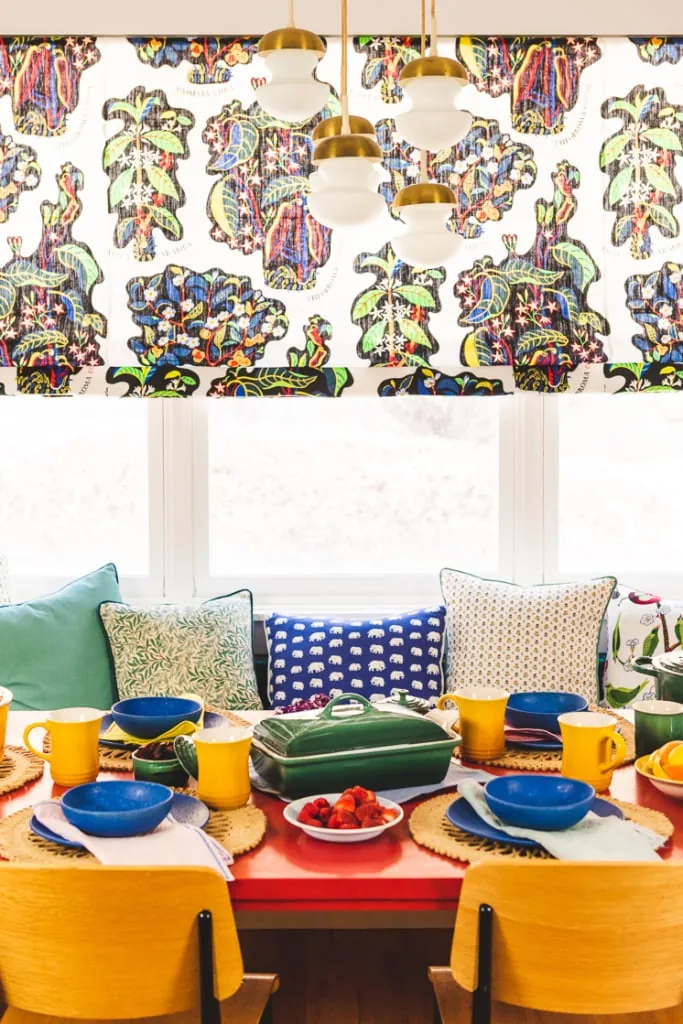
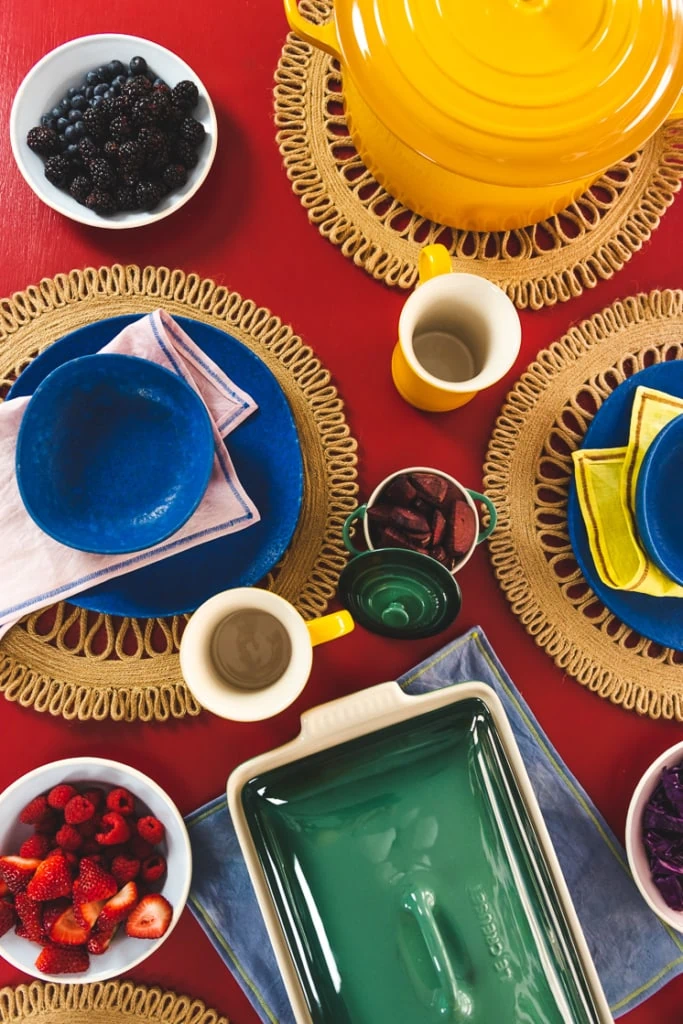
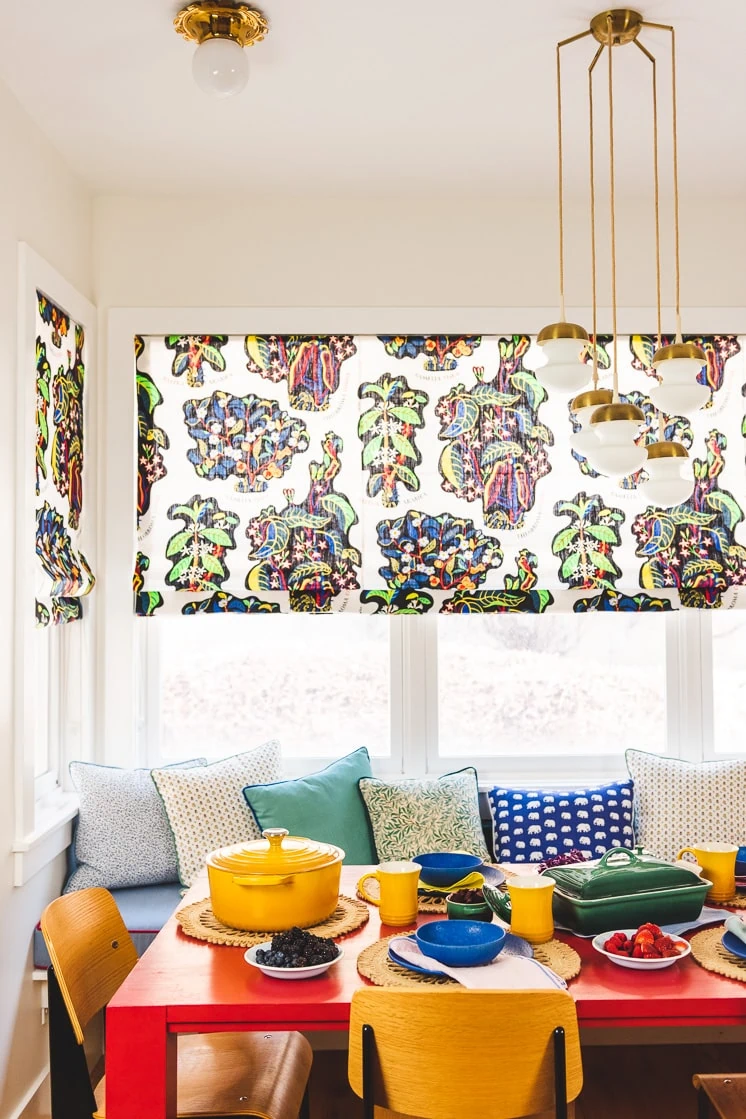
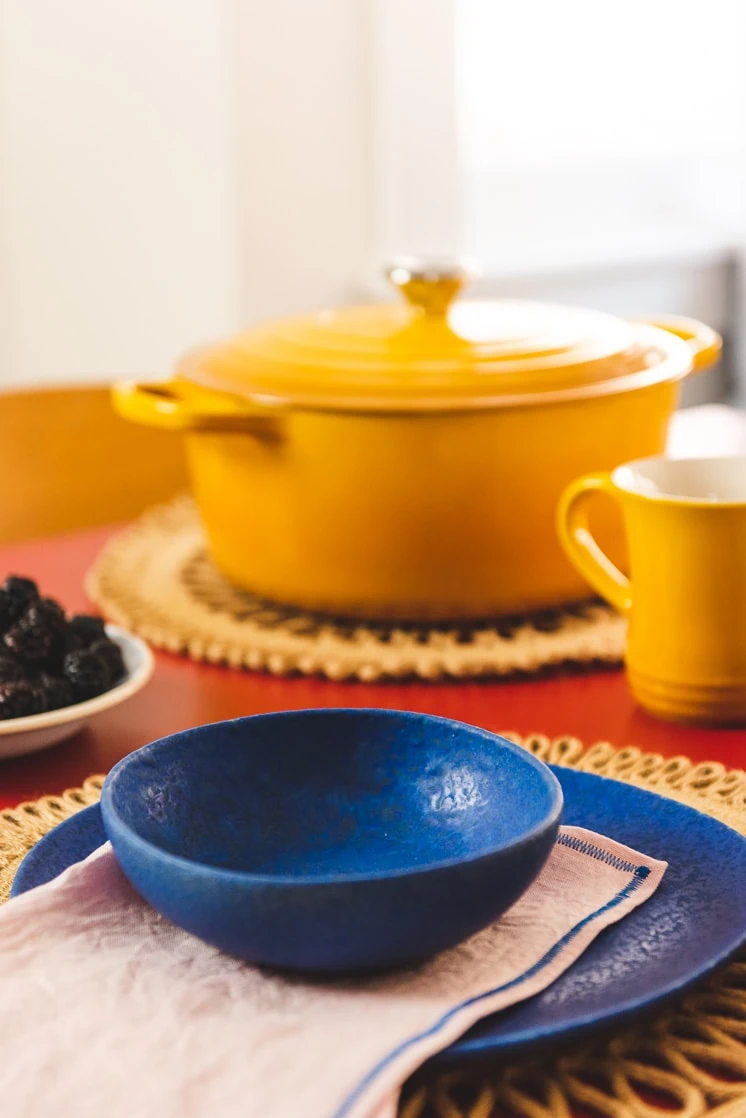
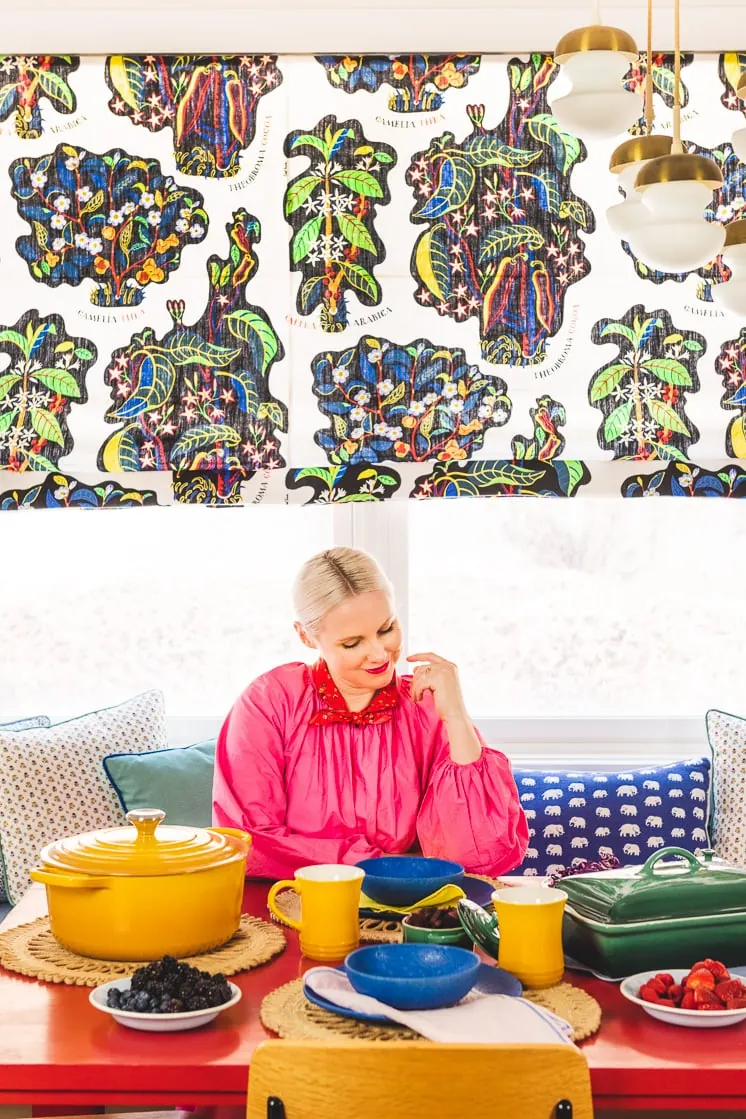
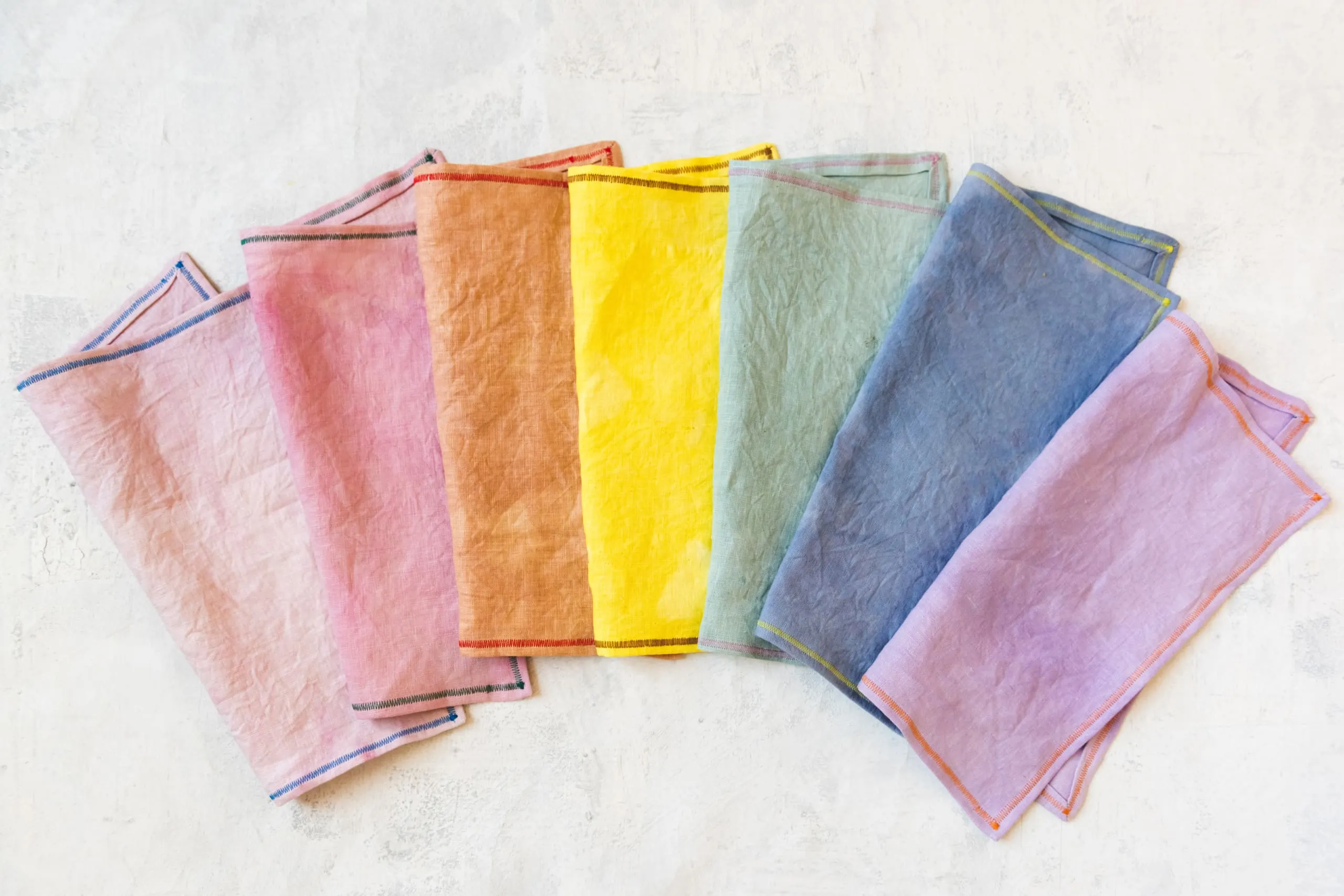
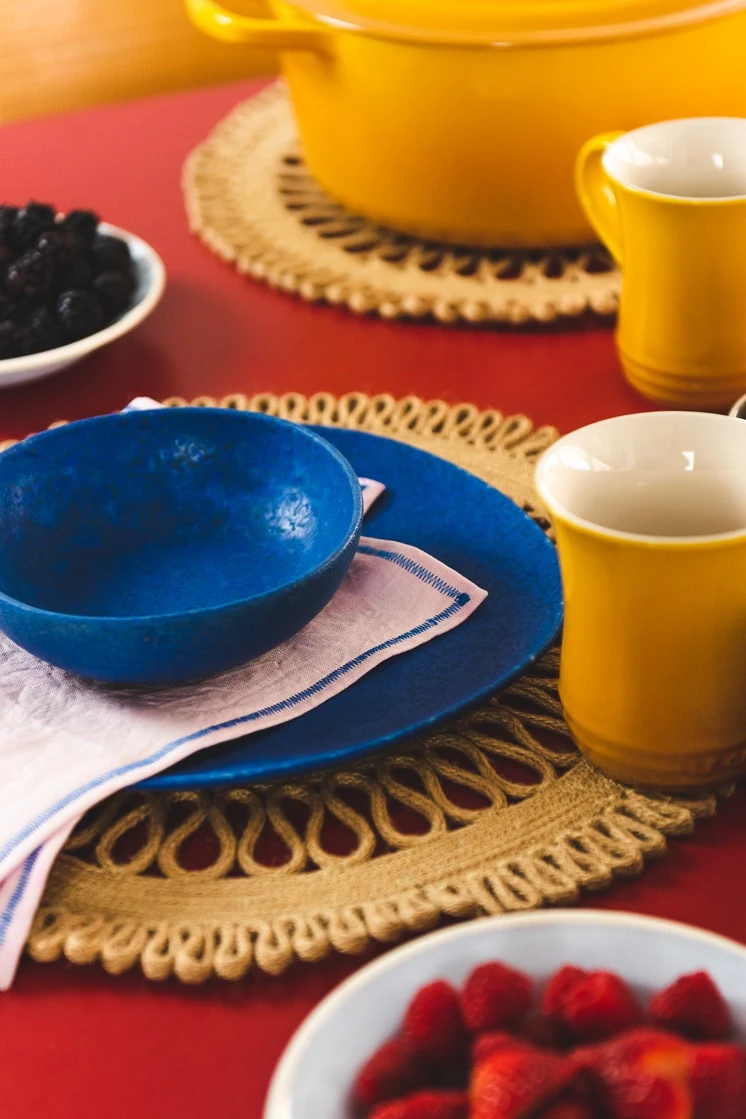
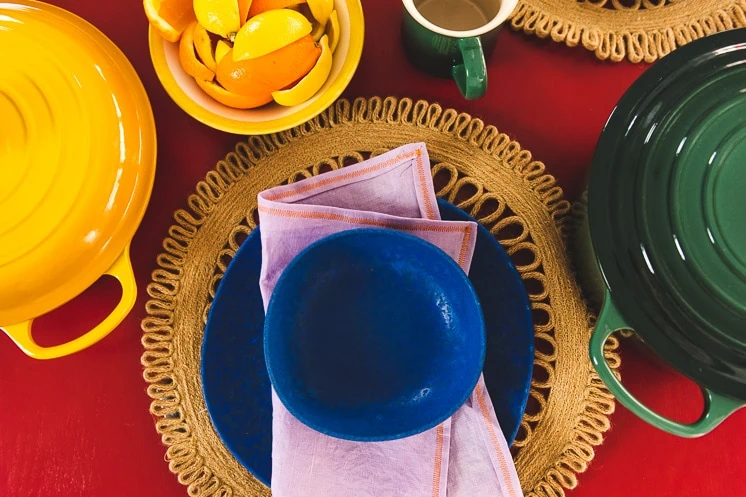


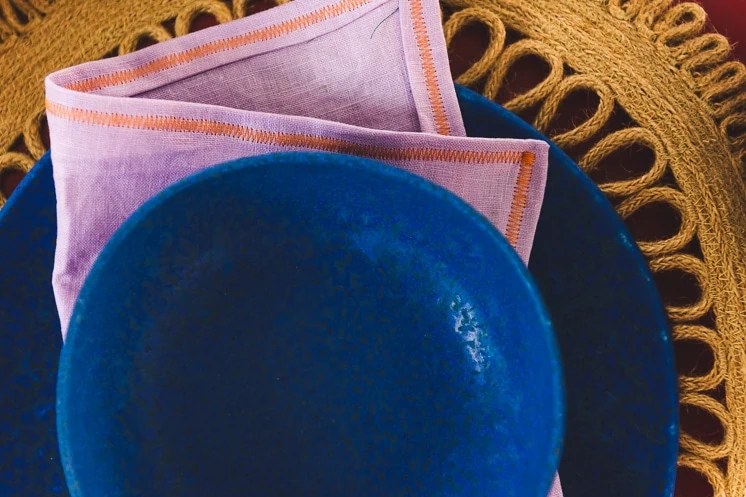
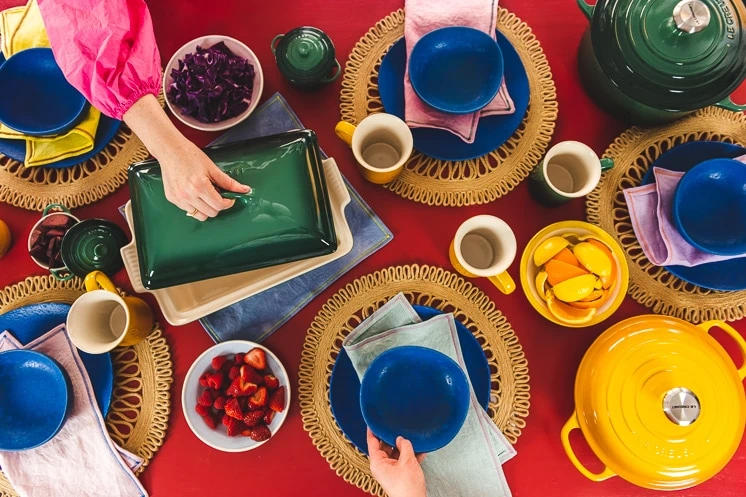
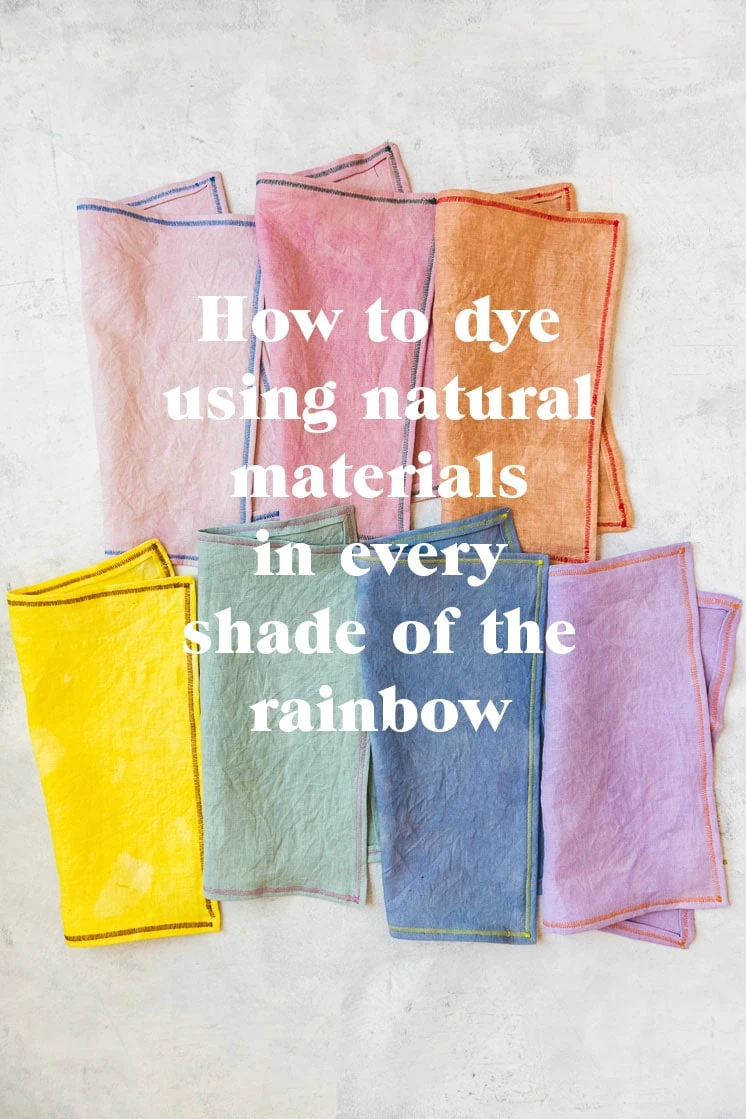
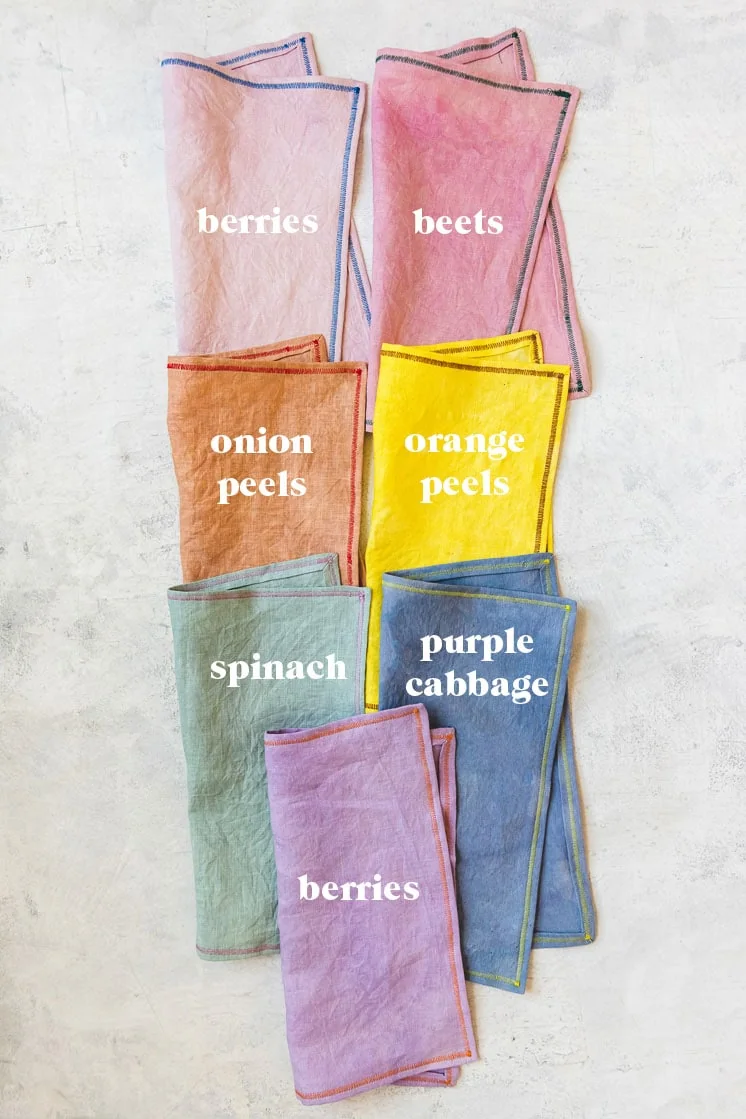

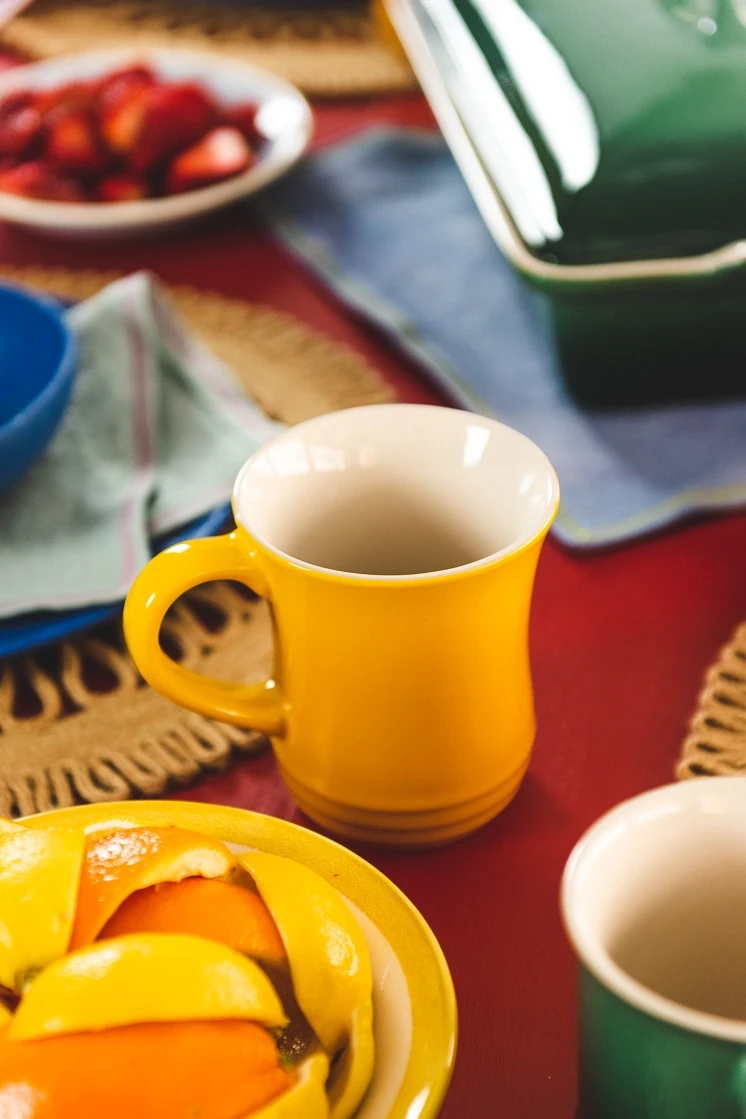
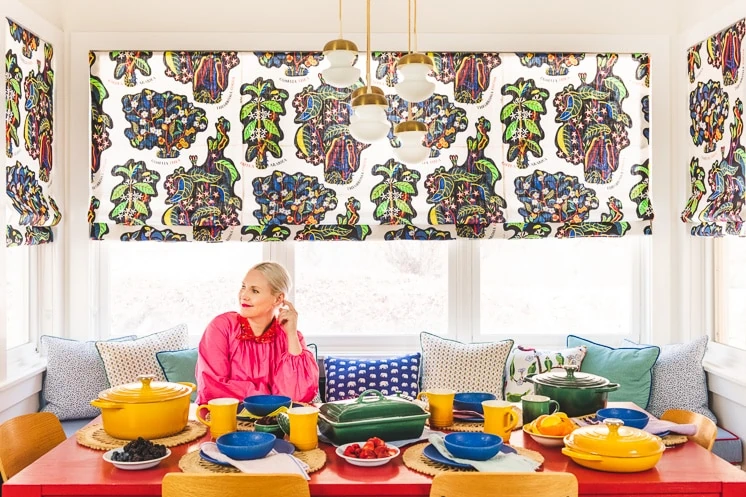
Comments